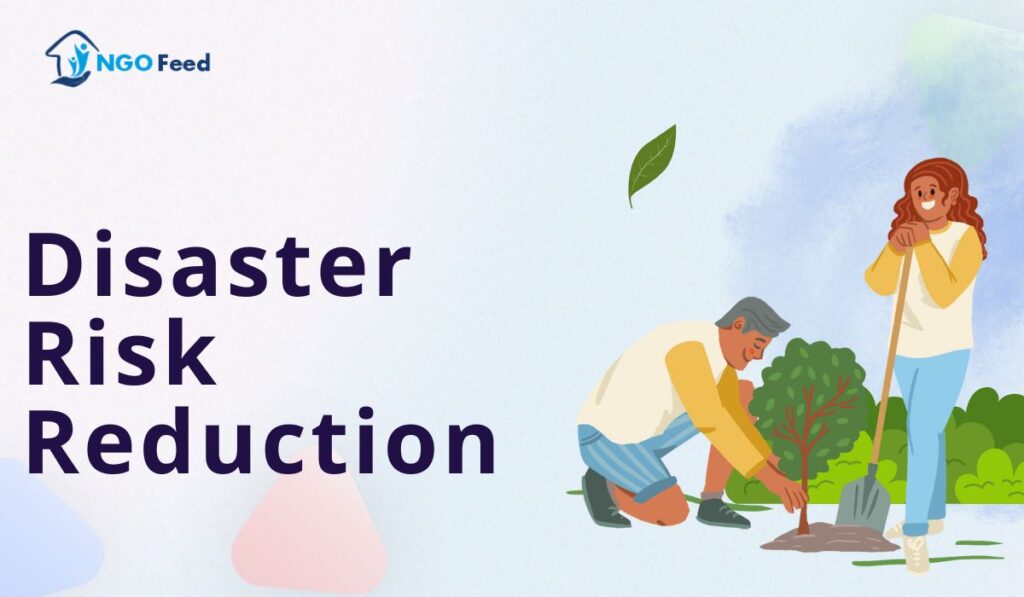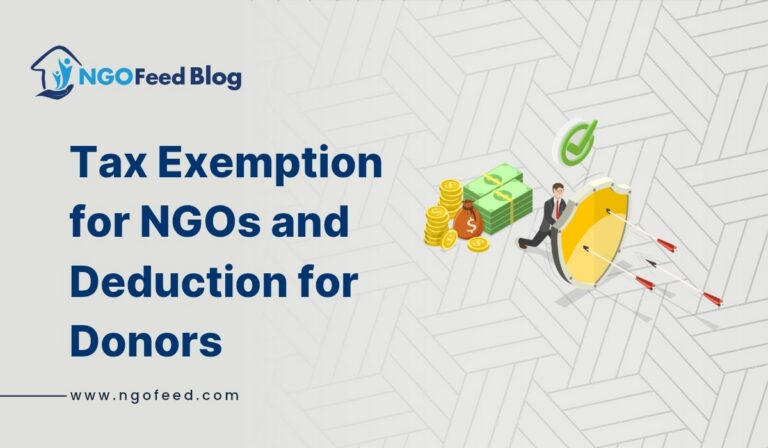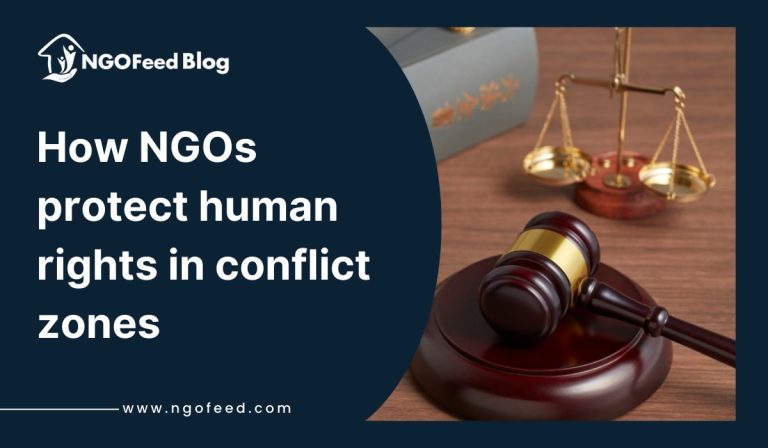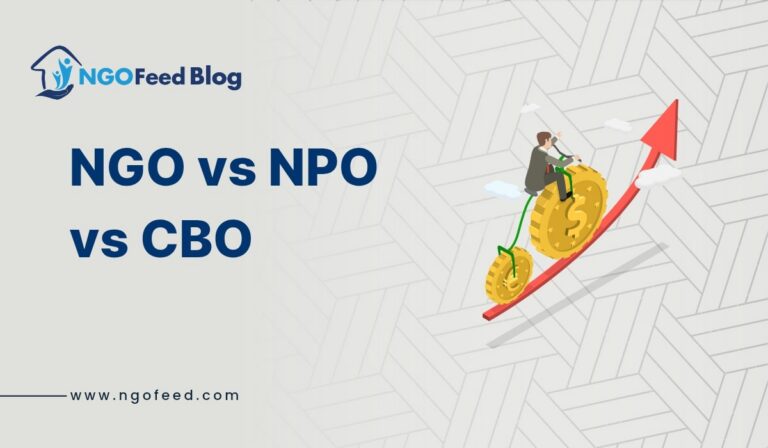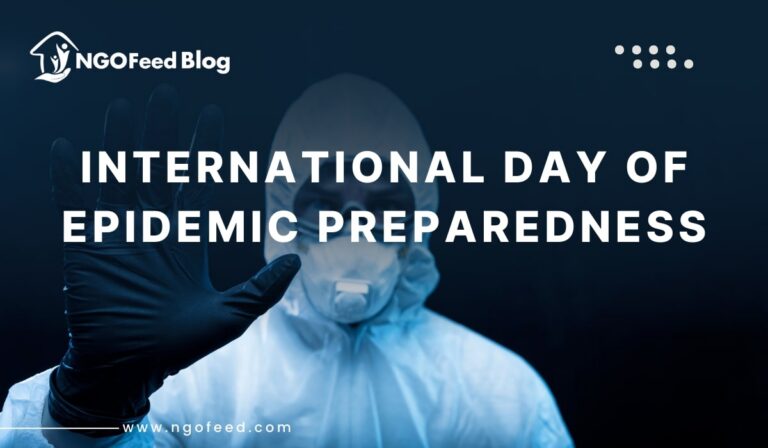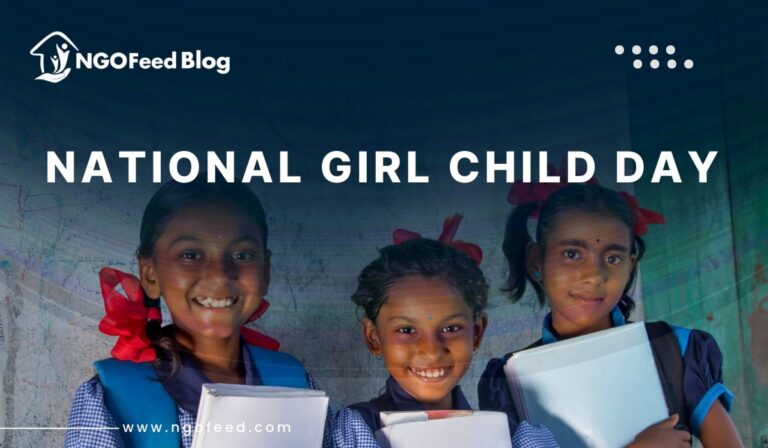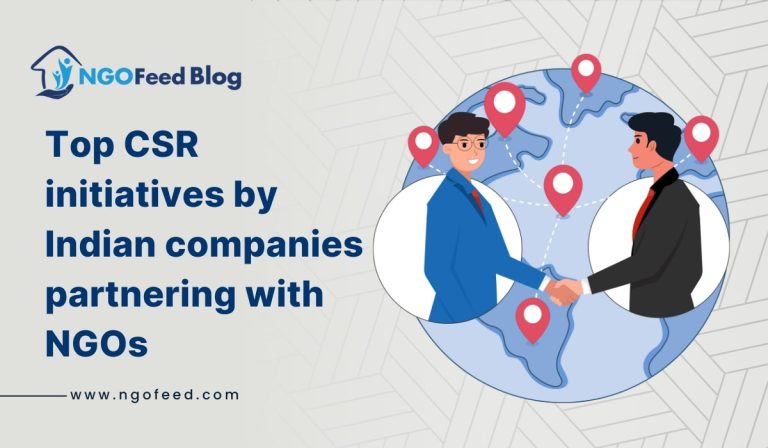Disaster Risk Reduction: Have you ever considered who helps communities when disaster strikes? You can be shocked to know that Non-governmental organizations (NGOs) are of great importance in diminishing disaster risk reduction. Be it in capacity building of volunteers, offering immediate relief supplies, or constructing new infrastructure during or after a crisis, NGOs take this role in most cases to give a hand.
This article is about how NGOs stand by communities before, during and after emergencies. As you do, you will consider the projects they have initiated and how you can play your part in an organization near you. Disasters can’t be prevented, but their impacts can be minimized by properly preparing and responding. The NGOs in India are not only coming into play in the face of disasters but are, in fact, an activity of disaster risk reduction happening every day, so read on.
Table of Contents
Importance of Disaster Risk Reduction in a Changing Climate
Disaster Risk Reduction (DRR) is a technique that is aimed at making a community more resilient in case of disasters. DRR is a process focused on the elimination of the destructive or deleterious effects of such natural hazards as earthquakes, floods, droughts and storms.
Preparedness and Mitigation
NGOs collaborate with local communities to differentiate hazards and in advance of disasters to avoid them. They make use of emergency response plans, train volunteers, and enlighten the people to conduct themselves in smart ways during disasters. NGOs also play an important role in the backbone of long-term risk mitigation projects, such as reinforcing building infrastructure, improving water and sanitation facilities, and protecting ecosystems.
Response and Recovery
We are heartbroken that disasters happen, but NGOs are there to ensure the communities rebuild and recover when they do. They ensure the provision of emergency aid in food, water and medical care to communities that find themselves in a crisis. NGOs are also involved in fixing houses and structures with broken ones, providing temporary housing for victims, and offering psychological help for survivors.
Building Resilience
A notable element of DRR is community building, the process by which communities can better handle events and rebound from them. NGOs build ties with local communities to conduct projects that prevent people from becoming vulnerable or sustain them from risks through the years. It includes boosting resource accessibility, diversifying the means of income, conserving the environment, and boosting the well-being of disadvantaged people.
Granted that NGOs contribute to promoting DRR, they allow the creation of communities that are safer, sustainable, and more disaster-proof, be they natural or man-made, which eventually makes people survive and flourish. DRR is life-saving and money-smart, whereby the world is more just and equitable.
Key Areas Where NGOs Contribute to DRR
NGOs have an essential function in restricting the risks of disasters through community prognoses, advocating and implementing projects.
1. Community Outreach
NGOs engage their constituents through interactive platforms so they can assess the danger and what to do in case of a disaster. Through education seminars, training programs, and information distribution, NGOs help communities know the possible risks, recognize signs of danger, and practice actions to lower loss and damage.
NGOs lobby for changes in policies and more significant investments from governments in the DRR. The advance is making efforts to reach government officials, running campaigns and events, authoring research and policy papers, and working hand in hand with the media to focus on the necessity of proactive risk management as a disaster mitigation measure. They lobby for enacting supportive laws and regulations, provision of enabling plans, allocation of sufficient funds, and enhancement of their knowledge on disaster risk reduction.
2, Project Implementation
NGOs participate in DRR programs by directly implementing the projects in the target communities, schools and local governments. Such exercises are embodied in dam construction, rehabilitation of critical structures, installation of early warning mechanisms and construction of emergency shelters, which increase resilience. In this respect, NGOs also provide technical support to local teams to facilitate risk assessment, contingency planning, and emergency response.
NGOs have become essential partners that form a very powerful combination to work in the critical areas of disaster risk reduction and building resilient communities globally. The governments, above all, are those that carry the main burden. However, NGOs occupy the second most important position, which includes the capacity of people’s mobilization, policy influencing, and on-the-ground action. Together, they are a pivotal part of inventing a better, safer tomorrow where disasters are anticipated and minimized.
Case Studies: The success of NGO DRR measures can be attributed to their implementation
1. The Bangladesh Red Crescent
The Bangladesh Red Crescent Society (BDRCS) is one of the leading forefront organizations in strengthening community resilience in the disaster-prone areas of Bangladesh. Via chartered training, they impart first-aid, search and rescue among locals, and disaster risk reduction. In addition, they train other community members. The BDRCS’s role is two-fold: it helps communities develop disaster risk reduction plans and evacuation procedures. Their method involves community participation so everybody can get involved: women, children, the aged, and the handicapped.
2. Save the Children
Save the Children is an international NGO committed to cooperating with schools and local communities to boost disaster risk reduction. In Nepal, their initiative strengthened the overall school safety by devising a full school safety program following the 2015 earthquake. The disaster risk reduction of teachers and students is taught, and emergency response plans for schools are developed. They also organized drills and simulations to equip students with the skills and knowledge necessary to mitigate disaster effects. Their child-centred approach will be a good basis to make sure that the unique needs and defenceless attitudes of children are attended to.
3. The Philippine Red Cross
The Philippine Red Cross has worked extensively on disaster risk reduction in the Philippines, an archipelago frequently hit by natural disasters like typhoons, earthquakes, and volcanic eruptions. They train volunteers and community members in disaster preparedness and first aid. They also help communities develop early warning systems, evacuation plans, and emergency shelters. The Philippine Red Cross takes an all-hazards approach, preparing communities for various disaster scenarios. Their disaster risk reduction programs have helped save many lives during major disasters.
NGOs around the world are working with communities to strengthen disaster risk reduction at a grassroots level. By providing training, helping develop preparedness plans, and taking participatory approaches tailored to local needs, NGOs are building resilience and helping safeguard lives and livelihoods. Their case studies provide valuable lessons on how to support successful disaster risk reduction.
Challenges Faced by NGOs in Disaster Risk Reduction
1. Funding
Financial sustainability and resource adequacy is the most formidable challenges NGOs are confronted with in their disaster risk reduction activities. However, resources at the government expense are commonly restricted and project-based, which obstructs the long-term strategy. NGOs themselves mostly depend upon grants,donationsand partnerships to keep their work going. Day after day activity of fundraising and administrative management squeezes out a lot of time from the actual delivery of the project. The lack of finances creates a challenge for NGO to employ a full-time workforce, offer trainings or import technology and infrastructure.
2. Coordination
NGOs undertake initiatives with a different set of stakeholders like communities, governments, the private sector, and NGOs, among others. This is a dilemma that these agencies might suffer from, especially when there is no clarity of roles and responsibilities. NGOs might find it hard organizing themselves, e.g. aligning their priorities with government agendas or intersecting with complex bureaucratic systems. Collaboration between NGOs can also occur, making services overlap or have gaps. Weak partnership and communication are key barriers to address these coordination issues.
3. Local Participation
The purpose of NGOs is to come up with and implement DRR programs to address the critical requirements of the people in the local community. Although it can be hard to get community members actively involved in all stages of a project this is a good and right approach. Issues, for instance, mistrust of outside organizations, conflicting cultural values or ideas and lack of resources or positive intention can help appsult some problems.
The NGOs should not only invest time to develop relationships with the communities but also they should collect information about the existing socio-economic situation of peri-urban communities and gain the ability to use culturally acceptable strategies to enhance community involvement in the process. When local people are actively involved and are accountable for the project, take them as a critical part in achieving sustainable objectives.
However, NGOs face the fact that they have a difficult job in which they are always giving the community the tools to defend themselves from disasters, but from the results, they can evaluate their effectiveness. Through a better-funding scheme, coordination, and engagement of local participation, NGOs have the potential to expand their role in helping the global community adapt to disasters.
How You Can Help NGOs Involved in Disaster Risk Reducing
Donate funds
The nonprofit sector is dependent on donations demanded to maintain its projects. Donating money, whether it is large or small amounts, will allow NGOs to develop disaster risk reduction programs such as training tool and resource The most reliable organizations have a simple donation process, which you can make using the website or their mobile application. By all accounts, donations, no matter how big or small, are very essential.
Volunteer your time
NGOs would be looking for volunteers to take care of diverse jobs. You can give your talents and time for things including filling in administrative work, fundraising projects, public edification, and awareness and advocacy campaigns. Meanwhile, volunteering not only gives you experience but is most important if you have a desire to make a successful career in disaster management or humanitarian work. See if there are any NGOs within your local community with which you can volunteer by meeting them.
Raise awareness
You have a significant task: influencing the local community with disaster risk reduction. Encourage appropriate social media use to disseminate essential messages on disaster preparedness and response, as well as facilitate community events that further advocate the same. Educate others about NGOs’ work in disaster risk reduction and explain how they can also support the activities. The project that will be undertaken will be aimed at building public awareness and support for disaster risk reduction. Thus, the NGOs will have a better chance to achieve their cause.
Advocate for political Action
Governments’ and policymakers’ assistance is not avoidable for NGOs to efficiently lower disaster risk. One of the ways that you can make a difference is to talk to political leaders and governments so that they can engage in stronger actions in disaster risk reduction. This can be done by writing petitions, signing petitions, and meeting representatives. Request for the policy changes and the fund allocation for disaster risk reduction programs. Through grassroots advocacy and lobbying, grass-root citizens and ordinary people can help accomplish this important goal of effecting real change on this particular issue.
There are different ways to contribute to NGOs as a part of a team or an individual in order to lower disaster risk and make communities more resilient through donations, volunteering, raising awareness and advocacy. Each one of the steps is consequential; therefore, take part and help the NGOs that act towards disaster risk reduction even now.
Conclusion
Whether or not you work with NGOs, you can still contribute to alleviating human suffering during such crises. Support with the funds of trusted aid organizations. You can volunteer your time and be able to also. Promote the use of social media to strengthen the campaign. And not the least among them is treating the survivor with care.
Seeing someone cheer you up when you are down because of losing everything is a feeling you can’t put into words. We are all ultimately affected so be part of the change, no matter how little your contribution is. Finally, what matters most is that we all would highly appreciate receiving a hand if we ever have to. Buying insurance helps you pay it safely in case a calamity hits tomorrow.

